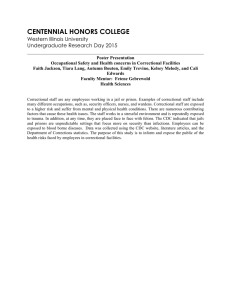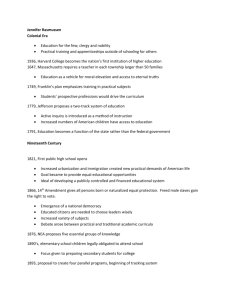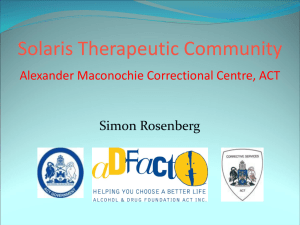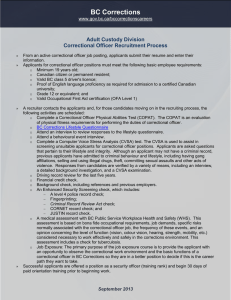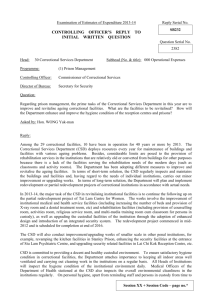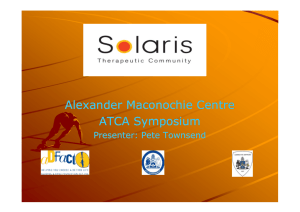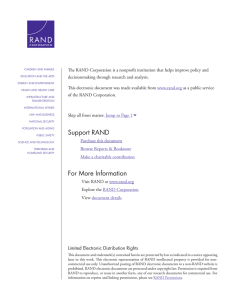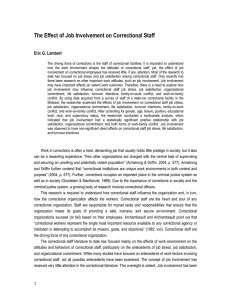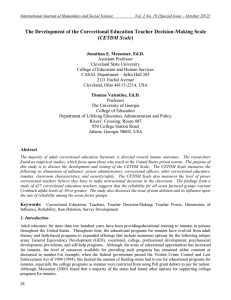(2014, May).
advertisement
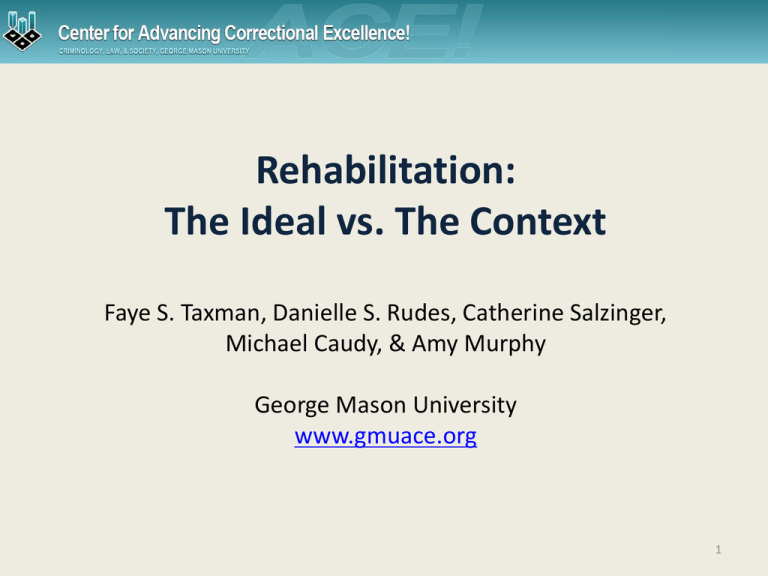
Rehabilitation: The Ideal vs. The Context Faye S. Taxman, Danielle S. Rudes, Catherine Salzinger, Michael Caudy, & Amy Murphy George Mason University www.gmuace.org 1 Rehabilitation 1. Educate in basic or vocational skills; 2. Involve in therapeutic activities to facilitate changes in attitudes, behaviors, or values; or, 3. Alter through punishment. The rehabilitation ideal provides a punitive experience with opportunities to learn to become a contributing member of society. 2 Challenges: Providing rehabilitative services within correctional settings. Correctional settings do not allow for autonomy, they focus on control. (Toch, 1987; Goffman, 1961; Dahlen & Johnson, 2010) Correctional settings replace client-centered efforts with programming suitable for a punitive setting. (Dahlen & Johnson, 2010) Correctional settings affect staff actions and behaviors by emphasizing control. (Rudes, Lerch, & Taxman, 2011) Can “what works” (evidence-based practices) thrive within a correctional culture? 3 Study—Mixed Methods Used RNR Program Tool for Adults to assess use of evidence-based practices and quality programming in one community (N=38) Content analysis of 4 common curriculums: Seeking Safety (SS), A Cognitive Behavioral Approach: Treating Cocaine Addiction (CBT), Thinking for a Change (T4C), & Strategies for Self-Improvement and Change (SSC) 4 RNR Program Tool for Adults Ranks Programs Based on EBPs and “What Works” 5 Average quality score (lowest scores in implementation and needs) 55/100 Average # of therapeutic approaches used 3.5 % programs that use more controls than therapeutic approaches 53% % programs that use more sanctions than rewards 53% Curriculum Review: Positive & Forward vs. Negative & Backward Criminal Justice Curricula Present/Fwd Looking Positive/Supportive Backward Looking Negative Lang/Dir Present/Positive Backwd/Negative T4C 38% 31% 48% --- SSC 11% 28% 29% 17% 54% 47% Non-Criminal Justice Curricula SS 26% 18% 16% 45% CBT 25% 23% 6% 38% 46% 52% 7 Curriculum Review: Therapeutic Direction • “Show them how to do this” (T4C). • “If the patient becomes upset, emphasize the emotional pain and then redirect the conversation to a neutral, present topic” (SS). • Minimal use in CJ curricula (just 13 times total, <1%) • More common in non-CJ curricula (59 occurrences; about 3% of codes). 8 Implications of the Culture of Control Affects treatment programs in untold ways Structurally, programs reinforce the notion of control Difficult to build programs that focus on motivation and client-centered care Emphasis on risk management is directed at staff; privileging controls over incentives Curriculums reinforce the notion that individuals must change regardless of content 9 Thank you! Questions & Comments Catherine Salzinger ssalzing@masonlive.gmu.edu 10
